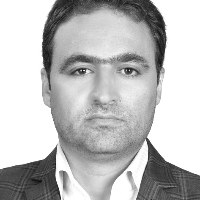Components of Environmental Quality and its Impact on Social Deviations in Squatter Areas (Case Study: Maragheh City)
Introduction :
During the last few decades, some issues, including industrial, economic, and social developments, village-to-city migration, and the growth and expansion of marginal areas, have resulted in deviations and social damages. Informal settlements in Iran, like many developing countries, manifest the growing trend of spatial inequalities and increasing poverty in cities. The feeling of security, as one of the essential needs of human beings, plays a significant role in the development of a sense of belonging to a place and the vitality of the citizens so the presence of security is one of the important variables in strengthening the human city and the identity of the cities. Today, social problems are considered as the most important threatening factors in the cities. Marginalization is considered one of the important centers for the occurrence of social problems. Due to the expansion of marginalization, the social-economic insecurity increases. Social deviations and criminality have become the symbol of marginal areas and facilitate the occurrence of crime in these areas. Overcrowding and excessive density in marginal areas, on the one hand, and the inferior culture of marginal residents, on the other hand, increase the potential of crime occurrence in the marginal neighborhoods of metropolitan areas. Lack of cultural training, low education of the citizens, their resistance to innovation, and mixing with the superior culture of the mother city have led to the historical lag of these regions. Therefore, despite several decades of appearance of marginalization and the change of several generations, the dominant culture of marginalization still prevails in these neighborhoods. The creativity and innovation of this research are to examine the relationship between social deviations and environmental quality and to determine the impact of environmental design components in reducing the crime rate in marginal areas. The current research aims to investigate the components of environmental quality and its impact on reducing social deviations in marginal areas in Maragheh City.
The research is conducted by a descriptive-analytical method and it is practical research. Library methods and field observations (questionnaires) have been used to collect the data. The statistical population includes all the marginal residents of Maragheh City. Using the stratified probability sampling method and the Kochran formula, 320 people were chosen as the sample of the study. Eighteen variables were used to evaluate the role of environmental quality in social deviations. The studied area in this research is the marginal areas of Maragheh city, including Anzab, Mikael-Abad, Zeinal-Abad, and Pahrabad. In the analysis of the data, SPSS software, chi-squared test (x2) as well as Simple Linear Regression test were used. In univariate regression, the changes of an independent variable on the dependent variable were evaluated. Considering that, there is an independent variable (environmental quality) and a dependent variable (social deviations) in this research, the univariate (simple) regression test was used. To determine the factors of the environmental quality scale and summarize the main factors of crime occurrence, the exploratory factor analysis model was used.
The analysis of the field study shows that the environmental quality in the marginal areas of Maragheh city suffers from some problems and it is largely lower than the average level. To test the impact of environmental quality on social deviations in marginal areas, an univariate regression test was used (Sig= 0.000; Beta= 0.32). it means that each unit of increase in the unfavorable state of environmental quality leads to a 0.32 increase in social deviations. The results of the univariate regression test indicate that with each unit increase in the unfavorable condition of environmental quality, social deviations increase by 32%. According to the results of exploratory factor analysis of the environmental quality variable, 3 factors were extracted after Varimax rotation. In this study, the impact of environmental quality on social deviations in marginalized areas was confirmed. However, no significant relationship was found between age and social deviations in marginalized areas, and also there was not any significant difference between social deviations in marginalized areas based on the gender of the subjects. Therefore, it can be concluded that the quality of the environment has a relatively equal effect on the social deviations of the residents, while gender or age cannot be considered as factors affecting the social deviations of the residents of the marginal areas and it is necessary to improve the environmental quality of the marginal areas and increase the required facilities as well as reduce the harmful factors.
According to the results of the factor analysis, three factors, including the functional-service factor, density and the space presence factor, and physical–user factor reduce the crime occurrence in the marginal areas. The results of the univariate regression test indicate that with each unit increase in the unfavorable condition of environmental quality, social deviations increase by 32%. In the marginal areas of Maragheh City, unemployment, violence, and the commission of various crimes, including murder, poverty, and addiction, show a high rate. The results of the research show that with urban planning and design, including the development of public spaces, renovation of houses, widening the passages, giving services, good night lighting, the establishment of some state offices in these areas, desirable public transportation and adaptation of urban furniture will encourage the residents to go to the public spaces and help to ensure the security of these areas.
- حق عضویت دریافتی صرف حمایت از نشریات عضو و نگهداری، تکمیل و توسعه مگیران میشود.
- پرداخت حق اشتراک و دانلود مقالات اجازه بازنشر آن در سایر رسانههای چاپی و دیجیتال را به کاربر نمیدهد.


